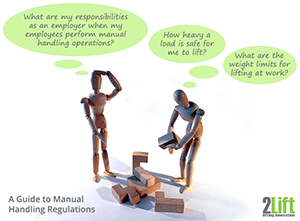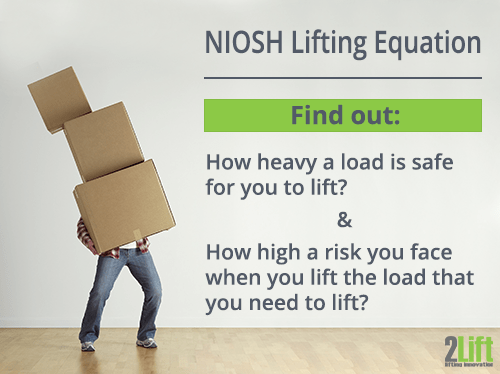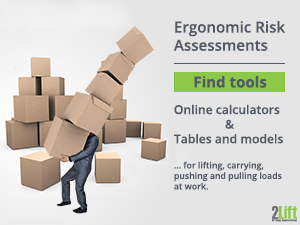Portugal
Lifting and Carrying at Work in Portugal: Manual Handling Regulations and Ergonomic Guidelines
Finding out what the law says about the manual handling of loads and lifting and carrying at work is not always such an easy task. And if you’re an employer, chances are that you don’t feel you have too much time to devote to such a research task.
That is exactly why we have created this page for employers on manual handling regulations and ergonomic guidelines for how to lift and carry in Portugal.
Here is what you’ll find on this page:
- An introduction to the main authority responsible for occupational safety and health in Portugal (including that of manual handling).
- Insights into Portuguese law regarding your duties as an employer if manual handling occurs in your workplace.
- The maximum weight limits for manual handling in Portugal
- Links to ergonomic guidelines for manual handling and correct lifting and carrying techniques.
The Authority Responsible for Manual Handling in Portugal
The main authority dealing with issues regarding occupational safety and health in Portugal is the Working Conditions Authority (Autoridade para as Condiçôes do Trabalho (ACT))
ACT acts both as public information organ on the policies and regulations on occupational health and risks and as controlling unit ensuring that companies comply with the labour law to protect workers and their working environment safe from hazards (reference).
In Portugal the minimum health and safety requirements for manual handling as stated in the EU Directive 90/269/CEE has been transposed into national law via the Decree-law no. 330/93 of 25 September (Decreto-Lei nº 330/93, de 25 de setembro).
The aim of this legislative act is to help minimize the risks manual handling in order to reduce the number of MSD incidents and workers suffering from low back pain.
The Legislative Duties of the Employer when Lifting and Carrying, Pushing and Pulling Occurs at Work
As as an employer you have full responsibility for ensuring the safety and health of your workers, this includes protecting them from ergonomic risks from manual handling operations.
It is the employer’s duty to do what he or she can to avoid any activity of manual handling that may entail health risks – either through organizational changes or via implementing mechanical aids.
If manual handling cannot be avoided, the employer must take appropriate measures to reduce the risks of manual handling as much as possible.
The employer must perform risk assessments of the manual handling operation.
When carrying out ergonomic risk assessment, the following areas require a special focus:
- The characteristics of the load (too large, heavy, difficult to get a good grip on etc.)
- The physical efforts required by the worker (too much effort, twisting of the trunk, ergonomically incorrect postures)
- The working environment: The employer must also make efforts to optimize on the working environment to avoid risks (ensure enough space, level flooring, appropriate temperature etc.)
- The manual handling activity itself: The employer must also take appropriate measures in terms of ensuring enough rest, healthy work pace etc.
It is also the duty of the employer to ensure that the workers know everything there is to know about the manual handling activity such as health risks and the maximum weight of the load. The employer must also provide adequate training so the manual handling happens in an ergonomically correct fashion.
Maximum Weight Limits for Lifting and Carrying in Portugal
As one of the few EU countries Portugal has also incorporated weight limits into legislation.
The legal weight limits for manual handling in Portugal are:
- A maximum of 30 kg for infrequent/occasional operations.
- A maximum of 20 kg for frequent operations.
Ergonomic Guidelines for the Manual Handling of Loads in Portugal
ACT has published a practical guide for the manual handling of loads, Movimentação manual de cargas. Guias práticos, where they go through the risk factors of manual handling and ergonomic lifting principles in an easy and quick-to-read manner.

Aside from the risk factors mentioned in the Decree above, this guide also points out the importance of including individual factors in the risk assessment such as age, personal strength, ability and knowledge, previous MSD incidents and lifestyle. Other than that it mentions many of the risk factors mentioned in the law and elaborates on them.
The rest of the document contains information on correct and safe lifting techniques and postures.
Another publication on ergonomic lifting and carrying guidelines from ACT is Riscos profissionais associados à movimentação manual de cargas (Professional risks associated with manual handling of loads).
Risk Assessments for the Manual Handling of Loads in Portugal
Unfortunately we haven’t been able to find any manual handling specific ergonomic risk assessment tools or sheets to fill out for employers in Portugal. On ACT’s website they do refer to the free OiRA risk assessment tools for risk assessing workplace risks.
Online Resources on Manual Handling (Lifting and Carrying, Pushing and Pulling) in Portugal

- Alivie a carga! (Relieve the Load)
- Facts. Perigos e riscos associados à movimentação manual de cargas no local de trabalho (Facts. Dangers and Risks Associated with the Manual Handling of Loads in the Workplace)
- CUIDADO! Com a Movimentação Manual de Cargas (WATCH OUT! With the Manual Handling of Loads)
- Decree-law no. 330/93 of 25 September
- Movimentação manual de cargas. Guias práticos
- Riscos profissionais associados à movimentação manual de cargas
Information Disclaimer
We have done our very best to ensure the accuracy and reliability of the information presented on this page. However, we cannot guarantee the correctness of any information (regulations change from time to time, responsibilities change hands, etc.). Thus we cannot accept any responsibility or liability for the accuracy, content, completeness, legality, or reliability of the information provided here.
If, however, you are aware of any outdated or incorrect information on this page, you are very welcome to contact us, so we can bring our page up to date.
Other Pages on Manual Handling Regulations
Country Specific Pages with Ergonomic Guidelines and Risk Assessment Tools
Go to Ergonomics for an overview of rules and regulations worldwide.
Go to our Homepage.


















